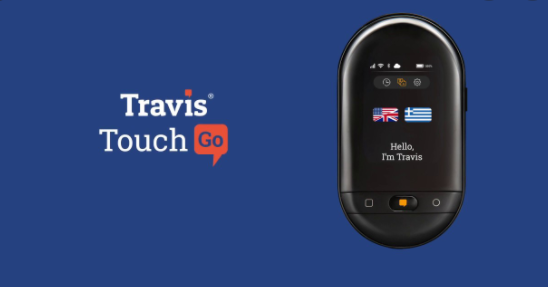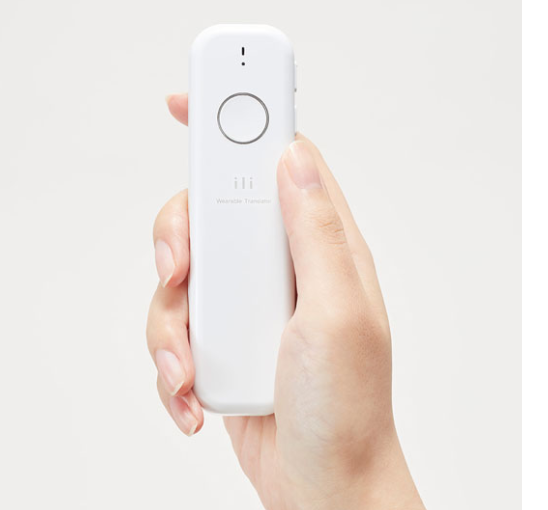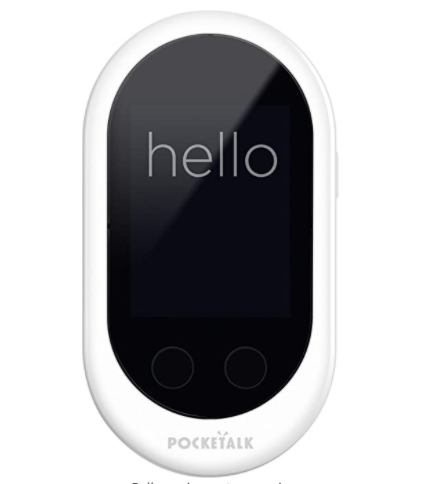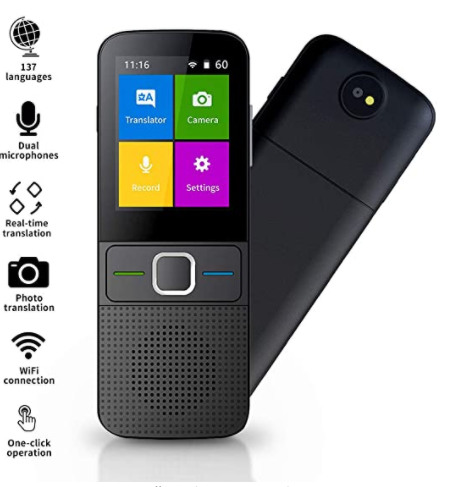Electronic translators have gained a lot of popularity in recent years, and for good reason. With an estimated 7000 living languages spoken all over the world, we cannot expect people visiting a certain country to learn its language. Travelers can, of course, learn the basics but that is rarely enough. This is where instant translator devices come in. If you have yet to hear of them, they are small gadgets that come with built-in languages that they can translate to and from. You choose the languages, speak into the device, and it then voices the translation. Very convenient!

These instant translation devices have become very popular among travelers in particular, as it allows them to somewhat bypass the language barrier and communicate better. The reason you’re here is probably because you’re looking to buy one of these convenient gadgets for traveling. Granted, there’s not much traveling going on at the moment because of the COVID-19 pandemic but the world will go back normal eventually. So to prepare for any future travels to foreign countries, now is the best time to look into an electronic instant translator.
Here’s everything you need to know and consider before buying an electronic language translator in 2020.
Do electronic translators work, and how do they work?
If you have never used one of these voice translators, you may be unsure about what to expect. If you’re a skeptic, you are likely expecting the translator device to do only basic sentences correctly. If you’re non-skeptic, you may believe that translations will be as accurate as they are shown in advertisements for these devices. But the truth is somewhere in the middle.
First of all, they do work, and quite well depending on the situation. However, when it comes to electronic translator devices, it’s important to not expect perfection. They won’t be able to accurately translate your complex thoughts about global warming, but you will be able to have simple conversations. Most of the translation devices don’t work so well with longer, more complex sentences, and that is hardly surprising because then translators and interpreters would be out of a job. Nevertheless, they are very convenient when traveling, in some business situations, and more personal conversations. Here’s how a voice translator works.
Electronic real-time translators come with built-in languages and have an online or offline mode, or both. When the device has an online mode, it uses a combination of built-in languages and the Internet to do the translation. This allows the translations to be more accurate and natural. Devices that don’t have an online mode, on the other hand, only use the built-in languages for translation. In this case, the translation may be less accurate and more stiff.
The number of built-in languages varies from device to device, some offer as many as 140 languages, while others have as little as 10. More pricey devices generally have a larger number of languages available but that is not always the case.
If you are convinced and have decided that you need an electronic translator, there are a number of criteria you need to consider before you actually buy one.
How do I choose an electronic translator?
With so many instant translators available, the abundance of choices may overwhelm you. However, as long as you carefully consider why exactly you need a translator device, you should be able to pick the one that best suits your needs. To help you, here are a few criteria for you to take into account.
For what purpose will you use the voice translator device?
Instant translators can be used in a variety of situations, such as learning languages, traveling, doing business, or when communicating with someone who does not speak your language. If you’re going to use the device solely for traveling purposes, such as ordering food, asking for directions, or engaging in simple conversations with the locals, you can probably make do with a basic offline translator.
If you’re planning on using the translator for important, more extensive conversations, you should look into ear devices that do continuous translation. These devices are essentially real-time translators in your ears that provide a translation without disrupting the flow of the conversation. However, such a device is automatically more expensive. Alternatively, you can choose less expensive instant translators that don’t allow a continuous conversation but translate just as well.
Do you need an online mode?
Whether your device needs an online mode also depends on what purpose you’ll use it for. Devices that don’t use the Internet work completely fine but may do less accurate translations or make more mistakes. However, if you’re going to engage in simple conversations, an offline translator will perform well. Because devices with an online mode offer more fluent translations, they’re recommended for situations where more complex conversations happen.
What languages do you need?
Generally, the rarer the language, the less chance a voice translation device will have that language. But there are devices that come with as many as 140 built-in languages so unless you need a language that’s very rare, you should be able to find what you need without much trouble. If you need a common language like Spanish or Mandarin, you can invest in a basic device that has 10-40 built-in languages.
What features do you need?
If you have already looked into instant translators, you will notice that they come in a variety of different designs and have different features. Some have a touch-screen, while others require a smartphone app to work because they have no screen. Some devices you can put in your ear, while others you have hold in your hand. Do you want a device that requires Internet, or are you fine with one that can work offline?
How much are you willing to spend on an electronic translator device?
Perhaps the most important question is how much you are willing to spend on an electronic translator device. Basic devices can cost as little as $40, while advanced ones can be as much as $400. Of course there are many options with the price range somewhere in the middle.
What is the best electronic translator of 2020
If you have thought about what you want from an instant translator device, you can start looking at options. To help you choose, we have prepared a summary of the best instant translator devices of 2020.
Travis Touch Go
The Travis Touch Go smart pocket translator is a two-way translator designed to be used for traveling, business use, as well as engaging with people who do not speak your language. The device can do translations from and to 155 languages while online, and limited translations from/to 12 languages without Internet connection. All of the most common languages are available, including English (13 dialects), German, Spanish, Japanese, Chinese, Russian, French, etc. It should be noted that while at the time of writing it has 155 languages, some of them have only written output. 
It’s a small device that can fit in your pocket, comes with a touchscreen, and is easy to use. According to the developer, the devices uses 14 translation engines and AI to provide accurate translations. It also has dual noise-canceling microphones and high-quality speakers, so the device can be used in noisy environments.
Travis Touch Go can be purchased for $199. When you purchase the device, you also get an eSIM card that has 1 month of free data. Once you have used that, you can purchase more data if necessary. Alternatively, you can use your own SIM card or WiFi to use the device. The device can also be used as a mobile hotspot. While a bit on the expensive side, it does have an offline mode, which is very convenient.
ili Translator
The ili Translator is an offline, one-way translation device that supports English to Japanese, Mandarin, Spanish and Korean translations. The default input language is English, and you cannot change that. Because it is a one-way translator, communication may be a bit trickier as you will be able to express yourself but the other party will not. If you ask a question, they will understand you but you will not understand their response because ili Translator only translates from English. However, developers purposely made ili a one-way translator as it’s better for quick and efficient communication. The majority of questions asked by travelers using translation devices are yes/no questions, so in many cases a two-way translator is simply not necessary. 
The ili Translator is great for traveling to Japanese, Mandarin, Spanish and Korean-speaking countries and does not require internet to work, which is perhaps its best feature as finding WiFi in foreign countries can be difficult. It’s a small device so it will fit in your pocket, and the battery can last up to 3 days. And while it does not have a screen, ili Translator does not require a smartphone app to work. An app is available, and it is recommended to download it for updates, but it’s not essential.
ili Translator costs $199, which is a bit on the pricier side, especially considering it only supports 4 languages. But its simplicity and accurate travel related translations are certainly attractive features.
WT2 Plus
WT2 Plus are ear devices that do ear-to-ear translations, allowing you to have a continuous one-to-one conversation. The device comes in the form of two earbuds, one for you and one for the other person, and requires an app to work. It supports 40 languages, including German, Japanese, Korean, Chinese, and Italian. In order to set it up, you have download the app onto your smartphone or tablet and select the languages. You then put the ear device in and press your finger on the side when you speak. The other ear device will voice the translation.

This kind of device is more suitable in business and more personal situations rather than for interactions you have while traveling, as the person you are trying to strike a conversation with may find it awkward to put a strange device into their ear. However, for business meetings and more personal conversations, this may be better than other translator devices that require you moving the device back and forth between yourself and the other person. It should be mentioned that you can also use your smartphone or tablet’s speaker so that the other person does not need to put in the earbud. You can speak into the earbud in your ear and the translation would be voiced via your smartphone/tablet’s speaker.
The WT2 Plus AI real-time translator earbuds cost $239 and are the priciest device on this list. They may not be the best option for regular travelers, but may be most suited for business and personal situations.
Pocketalk
Pocketalk Language Translator is a two-way translator device that supports 74 languages. It’s suitable for both business situations and traveling, as the developers boast of its ability to translate long sentences. It’s a small pocket device with a touchscreen, and requires no additional setup such as downloading an app. It has dual noise-canceling microphones and speakers, allowing you to use the device in loud environments. It’s very simply to use, you interact with the device itself to set up which languages you want to use, press a button to speak, and the device will voice the translation.

One of the downsides of this device is that it does not support offline mode, meaning it entirely relies on the Internet to provide translations. But to avoid the hassle of finding WiFi hotspots, you can purchase a mobile data plan. When you buy the device, you automatically get a two year data plan, which will allow you to use the device anywhere in the 133 countries where the data plan works. After that, the data plan costs $50/year.
The original Pocketalk Language Translator costs $199, but a new Pocketalk two-way voice translator is available for $299.
SAULEOO Language Translator Device
SAULEOO Language Translator Device is a two-way translator that supports 137 languages, including Chinese, Japanese, Spanish, Russia, French, and Arabic. The device supports offline translations for certain languages, such as German, Korean, Spanish, Japanese and Dutch. But for the majority of languages, it does require WiFi. Nevertheless, having a device that does not require Internet to do translations is very useful.

It’s small device that can easily fit in your pocket. It comes with a touchscreen, meaning you don’t need an app to set it up. You just choose which languages you need, press a button and speak. It will take only a couple of seconds to voice the translation.
This is one of the cheaper instant translator devices, available for the price of $96. It’s best used when traveling and engaging in simple conversations. May not be suited for business or more official situations as you have to speak into the device and pass it to other people so they can speak.
In conclusion
There are many voice translation devices with different features available, and you should be able to find one that best suits all your needs. However, we should warn you that while these translation devices are incredibly useful in many situations, you should not expect them to be perfect, particularly if you’re trying to express yourself in more complex sentences. But there are certain tricks you can use when speaking to make the translation much more accurate, such as using more basic grammar.
Overall, language translator devices are an incredibly useful gadgets that can help people bypass language barriers, and take the stress out of communicating when abroad or with people who speak a different language.